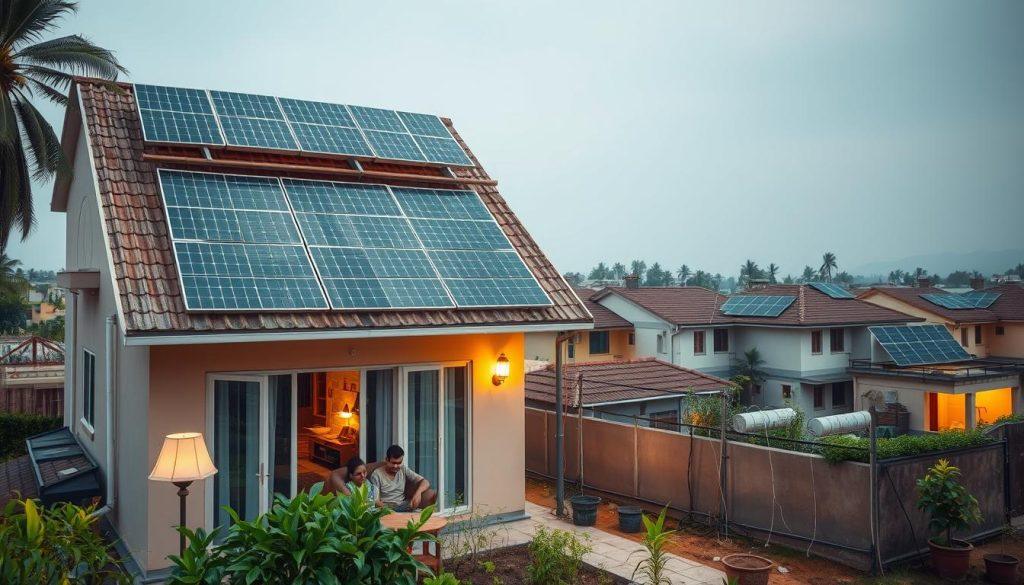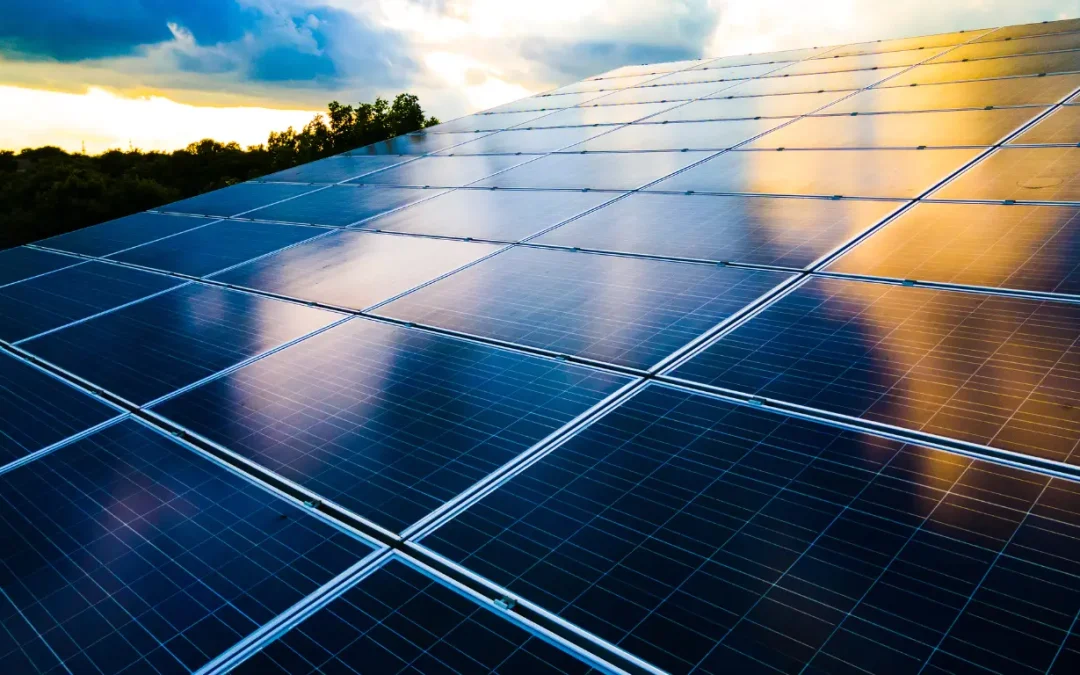Many homeowners in India are turning towards clean energy solutions, and solar power stands at the top of that list. For many first-time users, a 500 watt solar panel seems like the right starting point. This guide explains whether a 500W panel can meet the daily needs of an average Indian household.
With India’s growing interest in sustainable living, understanding how a 500 watt solar panel performs in real conditions becomes useful for both urban and rural consumers.
Key Takeaways
- A 500 watt solar panel can significantly reduce electricity bills.
- Solar energy contributes to a sustainable future.
- Understanding your home’s energy consumption is vital.
- Government incentives can help lower the initial cost.
- Solar panel efficiency can change based on location and installation.
Understanding Solar Power Basics
As the world shifts toward cleaner technologies, solar energy has become a dependable source for residential use. Solar power systems rely on photovoltaic (PV) technology, which converts sunlight into usable electrical energy.
A standard home solar setup includes:
- Solar Panels: Capture sunlight and generate DC electricity.
- Inverter: Converts DC to AC power for household use.
- Batteries (optional): Store excess energy for use during evenings or power cuts.
- Mounting structures and wiring: Ensure safe and stable installation.
Since India receives strong sunlight across most regions, solar energy offers reliable performance throughout the year.
The Benefits of Solar Energy for Homes
Solar energy provides several long-term advantages for Indian households:
Lower Electricity Bills
Generating your own power reduces reliance on the grid. Over time, this leads to noticeable savings.
Environmental Benefits
Solar systems decrease dependence on fossil fuels and help reduce carbon emissions.
Increased Property Value
Homes equipped with solar installations typically attract better resale value.
Government Support
India’s renewable energy push includes subsidies, net metering, and other incentives to make solar adoption easier for homeowners.
Overall, solar energy reduces costs, supports sustainability, and adds long-term value.
Why Choose a 500 Watt Solar Panel?
A 500W solar panel is suitable for homes that need moderate power generation. It works well for grid-connected systems and small off-grid setups.
Homeowners prefer 500W panels because:
- They can power essential appliances.
- They help reduce dependence on the grid.
- They are cost-effective compared to installing multiple smaller panels.
- Installation is simple and requires less rooftop area.
500W panels typically meet the needs of small to medium households when used correctly.
| Feature | Details |
|---|---|
| Energy Production | Ideal for moderate daily usage |
| Cost | More affordable than installing 1kW+ systems |
| Installation | Simple and space efficient |
| Usage | Works for grid-tied and off-grid |
solar panel 500 watt price in india
Solar panel prices in India depend on brand, efficiency, warranty, and technology.
Current Market Trends
A 500 watt solar panel generally costs INR 25,000–37,000 in India. Prices vary based on:
- Panel efficiency
- Manufacturer quality
- Warranty coverage
- Location and subsidy eligibility
Cost Comparison with Other Panel Sizes
| Wattage | Average Cost (INR) | Cost per Watt (INR) |
|---|---|---|
| 250W | 15,000 | 60 |
| 500W | 30,000 | 60 |
| 1000W | 55,000 | 55 |
This makes 500W panels a balanced option for those who want good output without investing in a large system initially.
Assessing Your Home’s Energy Needs
To determine if a 500W panel is enough, you need to calculate your daily energy usage.
Calculating Daily Energy Consumption
Follow these steps:
- List every appliance you use.
- Note the wattage of each appliance.
- Estimate the number of hours each appliance operates daily.
- Multiply wattage × hours to get daily consumption in Wh.
Example Table:
| Appliance | Wattage (W) | Hours/Day | Daily Use (Wh) |
|---|---|---|---|
| Refrigerator | 150 | 24 | 3600 |
| Television | 100 | 5 | 500 |
| Washing Machine | 500 | 1 | 500 |
| LED Bulbs | 10 | 10 | 100 |
| Computer | 200 | 8 | 1600 |
| Total | 7200 Wh (7.2 kWh) |
Choosing the Right Solar Setup
After calculating consumption:
- Compare your usage with what a single 500W panel can generate.
- Decide whether you need a single panel or a combination (1kW, 2kW, etc.).
- Evaluate rooftop space and orientation.
A 500W panel suits homes with limited appliances or households looking for supplementary solar energy.
Energy Output of a 500 Watt Solar Panel
Knowing how much energy a 500 watt solar panel makes is key for using it at home in India. The amount of energy it produces changes based on where you are and the season. It’s important to know how much energy it makes every day to see if it’s enough for your needs.
Average Daily Output in India
In India, a 500 watt solar panel usually makes 2 to 3 kilowatt-hours of energy each day. This depends on how much sunlight it gets. Places like Rajasthan and Gujarat get more sunlight, making them better for solar panels.
But, areas with lots of clouds or pollution get less sunlight. This means they make less energy. Despite this, many parts of India are great for using solar panels. They can help homeowners save money on their energy bills.
Factors Affecting Solar Panel Output
Several things can change how well a solar panel works:
- Location: Places with more direct sunlight make more energy.
- Panel Orientation: Pointing the panel right at the sun helps it catch more energy.
- Shading: Things like trees or buildings can block sunlight and lower energy output.
- Seasonal Changes: Changes in weather and daylight throughout the year also affect energy production.

IB Solar’s Performer Series: A 500W Option
IB Solar manufactures durable, high-efficiency solar panels suited for Indian climates.
Their Performer Series includes options around the 500W category designed for rooftop installations.
Why the 500W Panel Works Well
- Suitable for homes with limited rooftop space
- Higher wattage per panel improves overall system efficiency
- Good for moderate to heavy daily usage
- Lower installation and wiring complexity
Specifications (Typical 500W Range)
| Feature | Details |
|---|---|
| Wattage | 500W |
| Efficiency | Up to 18.5% |
| Dimensions | 1650 × 1000 × 35 mm |
| Weight | ~18 kg |
| Warranty | 25-year performance warranty |
IB Solar also supports customers with information regarding available subsidies under national solar schemes.
Use Cases for Solar Energy in Indian Homes
Solar can power a wide range of household activities:
- Lighting (indoor and outdoor)
- Refrigerators, fans, TVs, and computers
- Solar water heaters
- EV charging for home users
- Rural electrification and backup power
Solar energy offers versatility for small homes, apartments, and independent houses.

Government Incentives for Solar Panel Installation
India offers several incentives that help reduce installation costs.
Major Incentives
- Subsidies: Many states provide financial assistance for rooftop solar.
- Tax Credits: Applicable under renewable energy schemes.
- Net Metering: Allows homeowners to sell surplus electricity back to the grid.
IB Solar assists users with information regarding subsidy eligibility, helping homeowners make informed decisions.
| Incentive Type | Description | Benefits |
|---|---|---|
| Subsidies | Financial support for rooftop systems | Reduces upfront cost |
| Tax Credits | Relief on income tax | Makes investment more affordable |
| Net Metering | Sell unused electricity | Lower bills and long-term savings |
.
Conclusion
A 500 watt solar panel is a practical choice for many Indian households, especially those looking to lower electricity costs or start with a small solar setup. By understanding your daily energy needs and evaluating rooftop conditions, you can determine whether a 500W panel is sufficient or if you need a larger system.
Solar energy remains one of the most efficient ways to reduce power bills and contribute to a sustainable future. If you’re considering installation, assess your household consumption, explore available subsidies, and choose panels that match your long-term goals.




